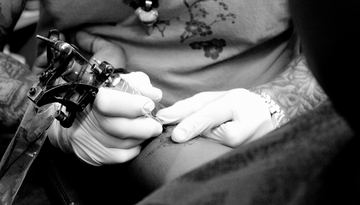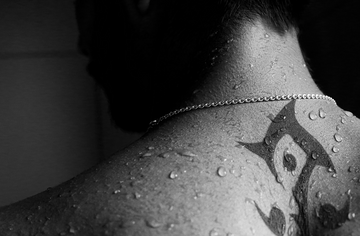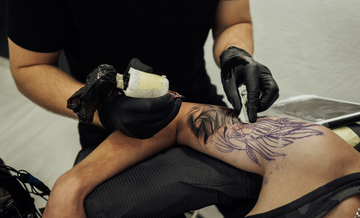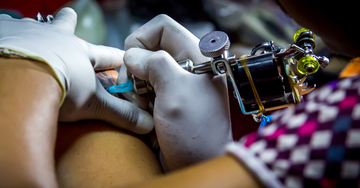Getting a tattoo is an exciting experience, but many people notice that their ink doesn’t look exactly the same after it’s healed. If you’re wondering what changes to expect, let’s break down the healing process and how it affects your tattoo’s appearance.
The Tattoo Healing Process
Initial Appearance vs. Healed Look
When you first leave the tattoo studio, your ink looks bold, vibrant, and crisp. However, this isn’t its final look. Fresh tattoos often appear darker and more defined due to excess ink, swelling, and plasma on the skin's surface. As the tattoo heals, it undergoes several changes, settling into its permanent state.
Key Stages of Tattoo Healing
-
Day 1–3: Inflammation
- Redness, swelling, and a glossy or wet appearance.
- Colors may seem overly saturated.
-
Day 4–14: Scabbing and Peeling
- Scabs form, and the tattoo may peel like a sunburn.
- Colors can look dull or muted during this stage.
-
Weeks 3–6: Final Healing
- Skin regenerates, revealing the tattoo’s true colors and details.
- The tattoo may appear slightly lighter or less sharp than when fresh.
Changes in a Tattoo’s Appearance After Healing
Color Fading and Settling
- Before Healing: Colors appear brighter and more vibrant due to excess ink and plasma sitting on the skin.
- After Healing: Some ink is naturally absorbed or expelled by the body, causing the colors to look slightly lighter or muted.
Texture Changes
- Fresh Tattoo: The skin may feel raised or bumpy from the ink and swelling.
- Healed Tattoo: The area smooths out as the skin repairs itself, blending the tattoo into the skin.
Sharpness and Detail Adjustments
- Before Healing: Lines and details may appear crisp and sharp.
- After Healing: Fine lines might soften slightly, especially on areas with thicker or textured skin.
Factors That Influence a Tattoo’s Final Appearance
Skin Tone and Texture
- Darker skin tones may cause lighter ink colors to appear less vibrant after healing.
- Thicker or textured skin can affect the sharpness of fine lines.
Ink Quality and Artist Skill
- High-quality inks tend to fade less during healing.
- An experienced artist ensures proper needle depth, preventing over-inking or blowouts that distort the design.
Placement and Size of the Tattoo
- Areas with more movement (like wrists or fingers) may heal differently, leading to minor fading or distortion.
- Larger tattoos might heal unevenly, especially if not cared for properly.
How to Care for Your Tattoo During Healing
Tips for Preserving Color and Detail
- Avoid Picking or Scratching: Let scabs fall off naturally to prevent uneven healing.
- Stay Out of the Sun: UV rays can fade colors and slow healing.
- Follow Aftercare Instructions: Use only recommended products and avoid soaking the tattoo in water.
Products to Use During Healing
- Antibacterial Soap: For cleaning the tattoo gently.
- Tattoo-Specific Ointments: Like Aquaphor or Hustle Butter to keep the area moisturized.
- Fragrance-Free Moisturizers: For long-term hydration.
Common Concerns About Healed Tattoos
Why Does My Tattoo Look Faded?
It’s normal for tattoos to look slightly lighter after healing. This happens because the outermost ink is shed during the peeling process, leaving the ink settled under the epidermis.
Is It Normal for Tattoos to Peel or Scab?
Yes! Peeling and light scabbing are essential parts of healing. However, thick or heavy scabs can indicate overworking of the skin during the tattooing process.
Tattoos naturally evolve as they heal, but these changes are all part of the process. With proper care and realistic expectations, your ink will settle into a stunning piece of art you can enjoy for a lifetime.





